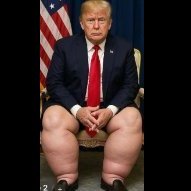Iran, Trump’s Hidden Battle: The Unseen Threat That Shaped His 2024 Campaign
-
Recently Browsing 0 members
- No registered users viewing this page.
Announcements
-
Topics
-
-
Popular Contributors
-
-
Latest posts...
-
4,436
LTR Visa is Now available for Long Term Residency
You mean you have a type of visa with "no tax on foreign income" printed all over it, and you prefer to lie low without filing taxes as you are supposed to do according to the letter of the law? Doesn't make sense to me, but I agree this seems to be the course of action (or rather of inaction) taken by most LTR visa holders. -
4,436
LTR Visa is Now available for Long Term Residency
No, but it certainly would be a good idea, if there's no other reason for announcing yourself to tax authorities. -
73
Ukraine Putin Agrees to Strong Security Promises for Ukraine: US Envoy
"Critics, including some Republicans, warn against trusting Putin..." [cue sad laugh track] Kindly refer to the 20th/21st Century history of the Empire of Lies, most recently its promise not to extend NATO any further east of Germany, its "color revolutions" in countries bordering the Russian Federation, its unwarranted invasion and destruction of Iraq, Libya, Syria and what have I left out (Mossadegh in Iran), on behalf of its genocidal ZioNazi masters. If you want to know what's up with Ukraine just take a few minutes and check out the country-simple elaboration by Professor Jeffrey Sachs (a Jew, incidentally), on the web. -
85
Trump marks 90th anniversary of SSA with a bunch of big lies
It certainly does. You’re the OP. With the disease. -
4,436
LTR Visa is Now available for Long Term Residency
My main purpose was to get a refund on the witholding tax I'd paid on my Thai dividends, together with getting some sort of tax residence certificate. Note that if the LTR visa confers a tax exemption upon its holder, said tax exemption should not be based on the LTR holder's staying under the radar. -
4
For Putin, an outbreak of peace means certain death.
Bill Browder’s mistake was believing that, in the aftermath of communism’s collapse and the chaos that followed, he could reliably profit as an outsider. He learned tragically, and at great personal cost that he could not. Since then, he has devoted his life to making amends for that mistake. As far as I know, he did cash out some chips from that gangster-run casino while he still could, so he’s not exactly short of a few lootewd roubles from that time either. But with Putin’s grip on power and his role at the heart of Russia’s corruption, we all know the rest is just hopeful supposition an outcome that, I would hazard a guess, will never come.
-
-
Popular in The Pub











Recommended Posts
Create an account or sign in to comment
You need to be a member in order to leave a comment
Create an account
Sign up for a new account in our community. It's easy!
Register a new accountSign in
Already have an account? Sign in here.
Sign In Now